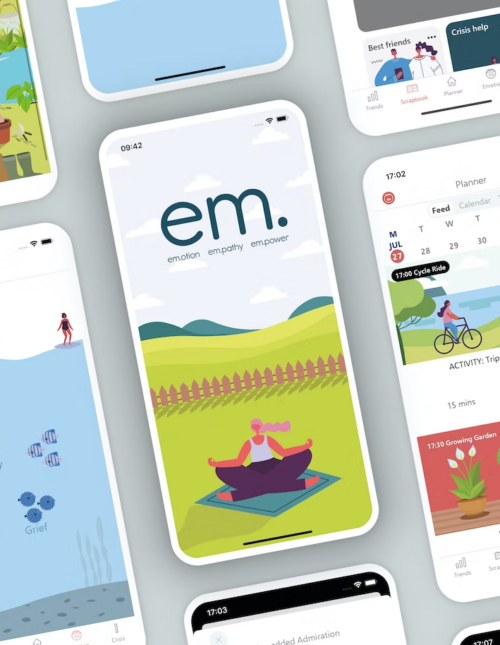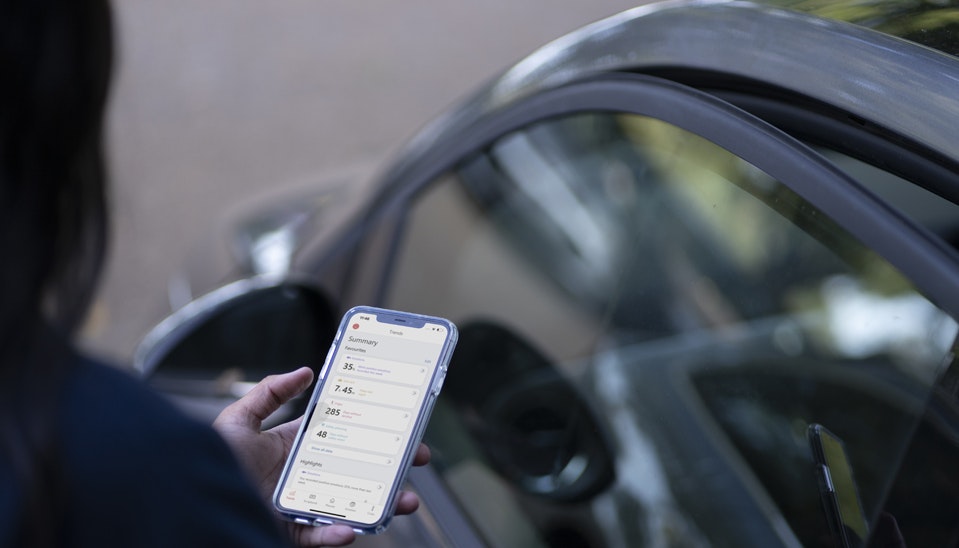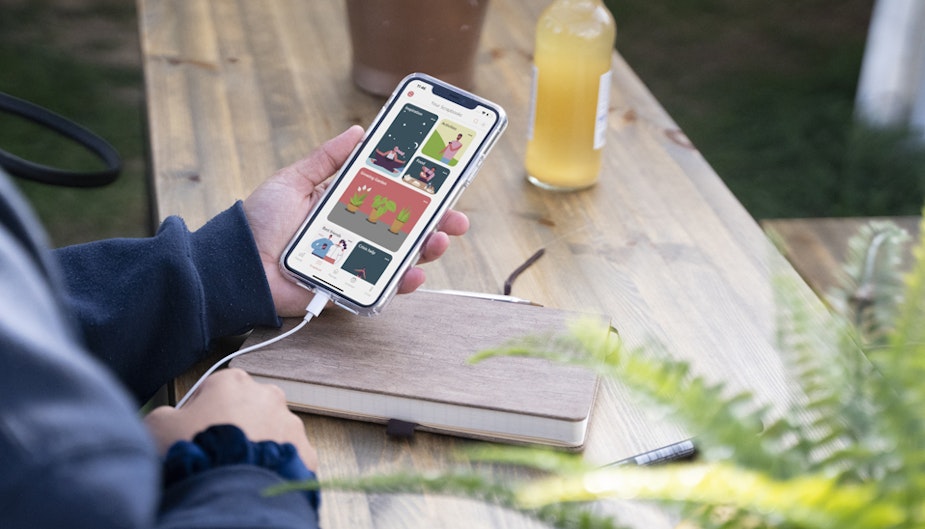A large proportion of the suffering and economic impact caused by mental health problems is not due to a lack of effective treatments. It is a direct consequence of the lack of access to mental health services due to a demand that far outstrips the availability of trained professionals needed. The scalability of digital therapeutics has the potential to bridge this gap and bring enormous benefits to society.

em. TTP’s Digital Therapeutic for Borderline Personality Disorder
TTP creates a ground-breaking digital therapeutic to support the treatment of people who struggle with regulating their emotions.
Context
For many mental health conditions, health service provision falls far short of demand. Digital health solutions can play a role in augmenting and delivering mental health services to a greater number of people.
Solution
TTP identified a need to support the treatment of patients who struggle with regulating their emotion and partnered with a Consultant Psychiatrist to develop an innovative app that motivates and helps users to practice skills in emotional regulation.
Result
TTP’s em. app shows how digital health solutions can be used to scale and augment mental health service provision and help to alleviate the associated suffering.
People with Borderline Personality Disorder (BPD) struggle with what are often described as overwhelming waves of emotion. This emotional dysregulation hampers their ability to manage daily life, leads to intense but unstable relationships, and – for some – creates a tendency to self-harm or threaten suicide. Although effective treatment programmes exist, limited healthcare resources mean that it can be difficult to provide an appropriate level of support to those patients most affected by this condition.
Existing psychological therapy focuses on helping people with BPD to learn to deal with their emotions, which are often due to an early traumatic experience in their life, and associated triggers as part of their healthcare. While this takes time, with good treatment many patients can overcome their symptoms and develop the skills to cope with emotionally challenging situations.
However, the programmes that have been found to treat this condition most successfully require an intense and lengthy period of treatment. Even in intensive treatment programmes, contact time with a trained therapist is often limited to a few hours per week – even before Covid19 further limited the scope for face-to-face contact with healthcare professionals.
Outside of treatment sessions, patients are often given a programme of activities and exercises that can help to improve emotional regulation.
We developed the em. app to support the work of trained therapists by helping patients to engage with their emotions and practice the emotional regulation skills on a more frequent basis, between therapy sessions or after a course of treatment has been completed.
TTP’s development began with the assembly of a multidisciplinary expert team to explore the problem space. This included staff with clinical backgrounds, psychology, human factors, electronics, front-end and back-end software development, and graphic and industrial design expertise.
The team worked closely with a consultant psychiatrist, Dr Jorge Zimbron, to understand the context and treatment programme for patients with BPD. The project team adopted elements of the treatment programme and created digital prototypes in order to see which parts translated well from the therapeutic environment to the digital space.
Further consultation with Dr Zimbron enabled us to identify typical patient characteristics and develop an initial user experience design that would most likely appeal to people with BPD. Testing with patients will form a key part of the next phase of development as the app is refined further.

Emotional Regulation
The em. app allows users to select, log and rank any emotions they are feeling from a pool of emotions and encourages them to consider whether these feelings are reasonable and if there were specific trigger factors. By being able to visualise and track their emotions over time, the aim is to help the user better understand, regulate and live with their emotions.
Life Structure
em. helps users to plan their day, suggests structured activities that are likely to have a positive influence on their emotions and provides prompts that help the user to prepare for and thus complete these activities successfully. Clinical evidence shows that structure and routine activities can improve emotional regulation.
Creativity as Therapy
Anecdotally, it is reported that people with emotional dysregulation disorders can be particularly creative. By supporting a range of creative activities, em. seeks to build on these interests to encourage patients to regularly use the app. In this way, em. motivates and helps users to help themselves, which could be critical in the success of treatment and the transition to self-care.
Outlook
The symptoms of BPD can range from mild to severe. While the first version of our app has been developed to support patients in a residential programme of therapy, em. could also be used to support the self-care of people with milder symptoms or for whom residential care is not available.



